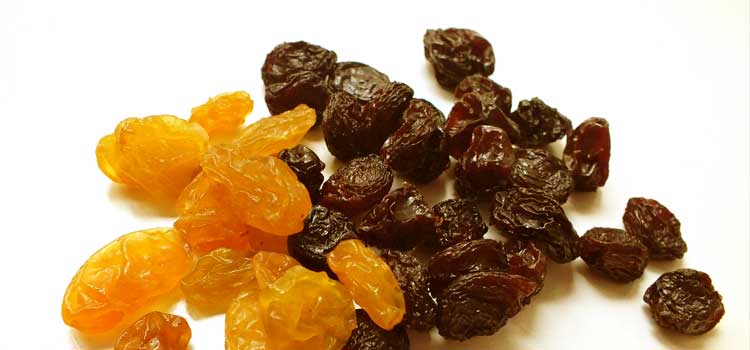To the untrained eye it may seems that a grape is an entirely different fruit than the raisin. Oddly enough, a raisin is just a grape that has been sun dried, dehydrated, or even set for a period of time in an oven.
Types of Raisins
The weird shriveled cousin of the grape comes in many colors and types just like the grape. The most common types are Dark (made from Thompson Seedless grapes which start out green!), Golden (also called muscats, because they are made from muscat grapes that are oven-dried), Sultanas (they are most popular in Europe and made from the Sultana grape), and Currants (made from the Black Corinth grape. They tend to be tiny and seedless.)
Types of Grapes
There are many types of grapes grown across the globe, but only a few will ever find their way to your kitchen table. Most grape types are produced for the creation of wine and do not have a pleasing taste to them when fresh. The most common types of grapes that we buy at the store are the Sultana (Thompson Seedless), Concord , Flame, Muscat, and Almeria. The easiest way to tell a wine grape from a yummy grape is by the size and look. Tasty table grapes are specifically grown to look visually appealing. They tend to be larger, without seeds, and have thinner skins to make them easy to eat.
Nutrition
The differences between eating raisins or grapes as it applies to the health benefits is the subject of many debates across kitchens and the internet. The honest truth is that both dried and fresh fruit offers health benefits. There is no denying that the nutritional value changes fruit when dehydrated. One factor that always plays a role is that dehydrated food will most certainly contain more sugar than its juicy counterpart. In many cases this also means an increased amount of the good stuff as well. Such as antioxidants.
Process of Drying Fruit
The process of drying fruit often uses a tray that offers heat and the necessary air circulation to evenly prepare fruit. The fruit is then put into an oven or dehydrator at a temperature of around 150 degrees for a period of 5-7 hours. Then the fruit is stored for a week or more in order to check it for moisture build up which is an indication that the drying process should be repeated. See how to make Raisins.
The Grape vs. the Raisin
Fresh fruit will contain a significant portion of water. The process of drying fruit is of course designed to remove this water. When grapes go through this process, nearly all of the water is removed. This generally does not remove all the nutrients, it simply serves to concentrate the overall grape into a smaller package. So when you compare serving sizes of grapes vs. raisins you will find that there will be more overall calories, antioxidants, and even sugar per serving. Studies have shown that raisins have nearly 3X the antioxidants of their grape cousins pound for pound. Surprisingly, if you get a serving size of grapes that contain the same amount of raisins, then the health benefits are very hard to distinguish between the two.


